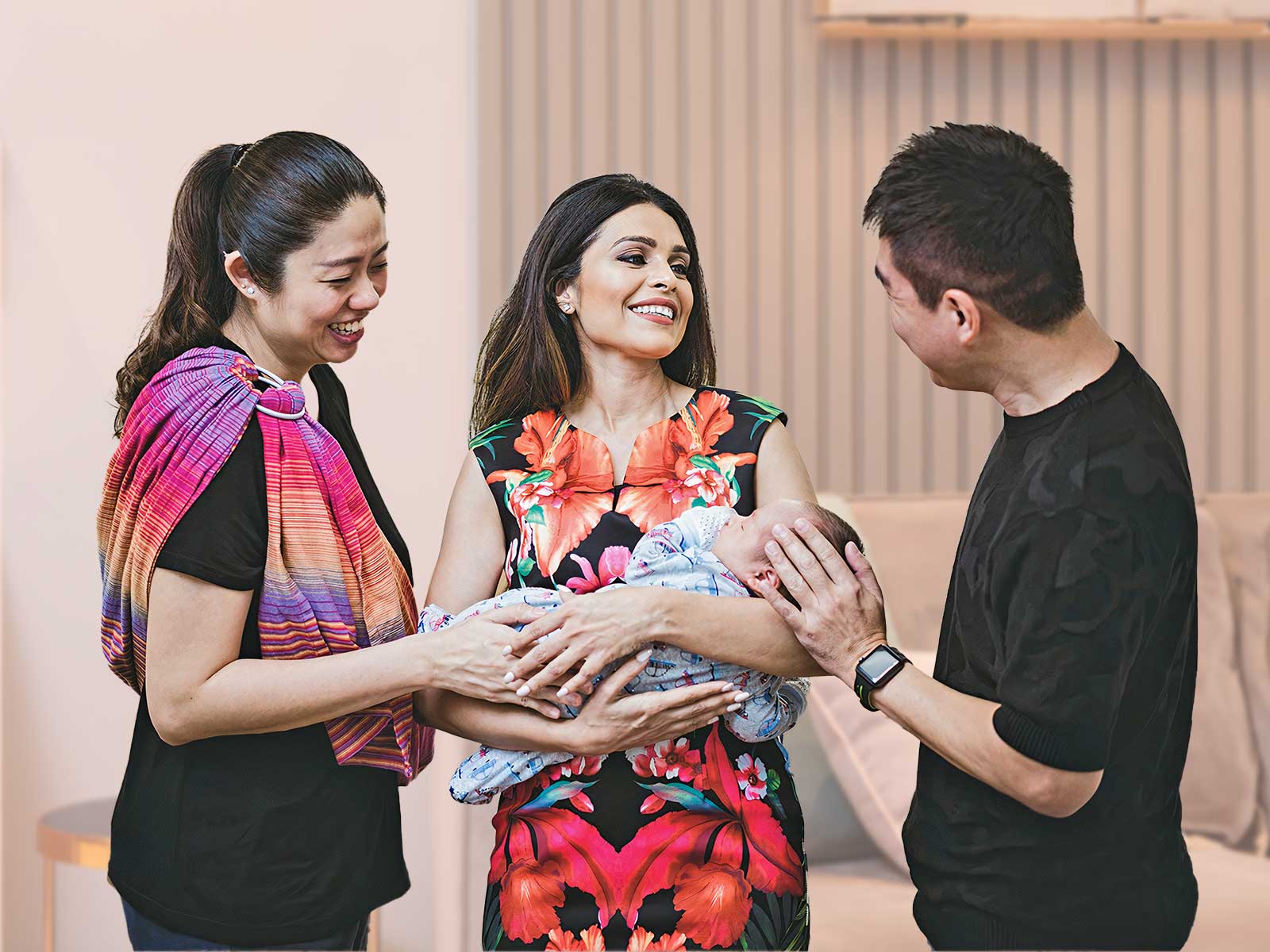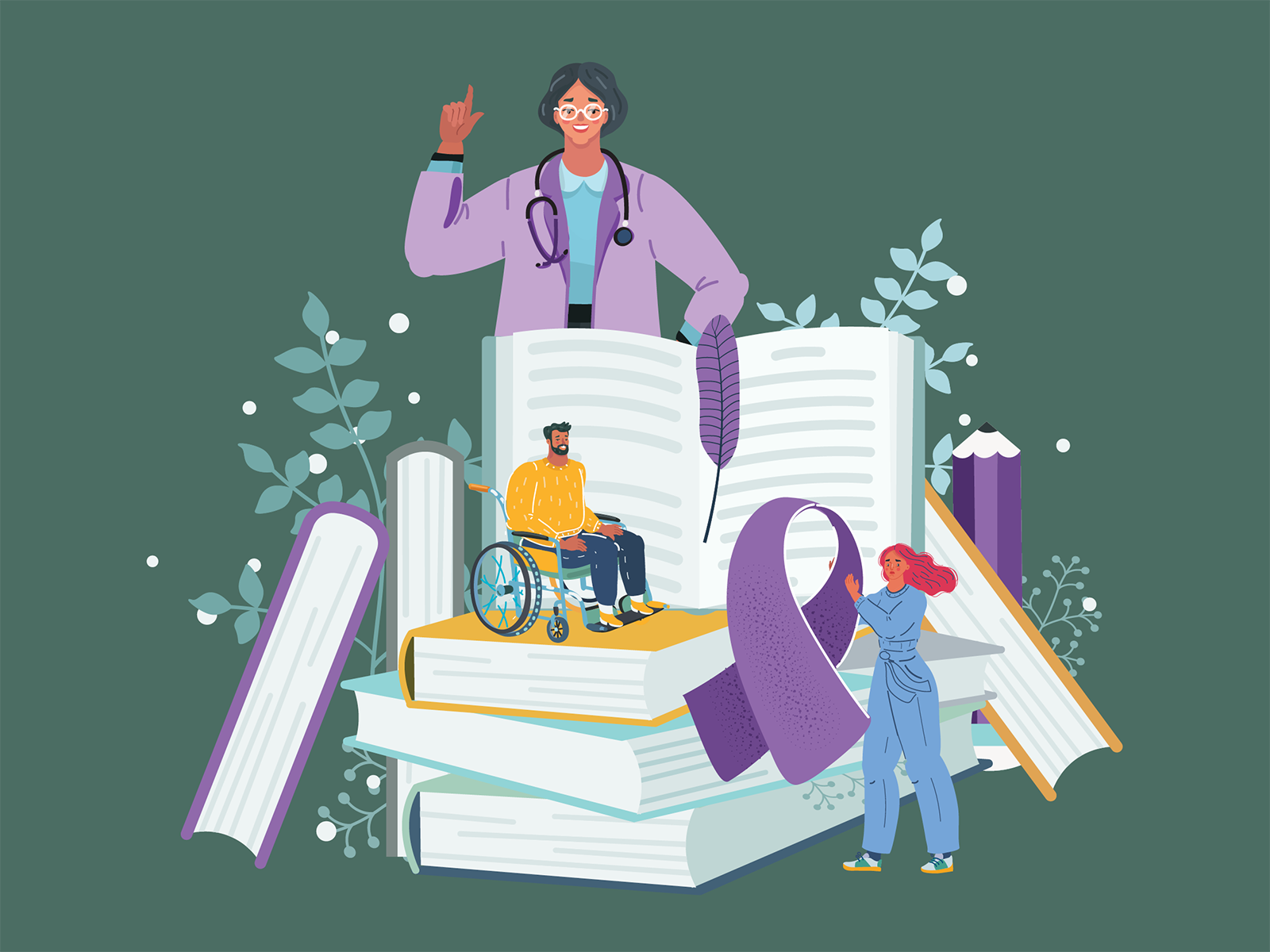
Issue 50
May 2024
A WORLD IN A GRAIN OF SAND
By Dr Png Chin Wen, Department of Immunology and Microbiology, NUS Yong Loo Lin Sschool of Medicine

As Academic Year 2023/24 draws to a close, I find myself reaching my third year as an educator in the Department of Microbiology and Immunology. Perhaps it is a good time to reflect on my transition from a post-doctoral research fellow to a lecturer, as well as the experiences that have shaped my becoming an educator over these past years.
To start, my research interest in gastrointestinal diseases began when I was a graduate student. During that time, my primary focus was on studying the effects of mucus-degrading bacteria on gut inflammation. My pastime was processing endless amounts of faecal and tissue samples from patients, as well as many litres of urine from colonic bladders, in order to purify enough mucin for my experiments. I was deeply involved in detailed analyses and the pursuit of new discoveries. This continued after I joined Yong Loo Lin School of Medicine, National University of Singapore (NUS Medicine) as a post-doctoral research fellow, where I focus on gastrointestinal cancer research. During this time, my supervisor, Associate Professor Zhang Yongliang, gave me various opportunities to teach classes comprising a variety of students, including undergraduates, graduates, and clinicians from the Masters of Clinical Investigation programme.
This was when the fun began. Suddenly, I had a stage to share knowledge and interact with students, many of whom had curious minds and asked unexpected questions. It dawned on me that this exchange of knowledge—kindling student interest and addressing challenging questions—is the essence of education. At this point, I thought to myself, “This is what it means to be an educator—I update myself with new knowledge, share lots of knowledge with the students, and get them interested so that they will ask questions that challenge me to learn more”. The perspective through which knowledge is seen now expands, and the focus on personal research and interest in a specific topic is enhanced by the responsibility to guide and inspire students. Therefore, when the opportunity to become a lecturer came along, I happily accepted it—only to discover that my initial perceptions about what it meant to be an educator had room for refinement.
I had a stage to share knowledge and interact with students. It dawned on me that this exchange of knowledge— kindling student interest and addressing challenging questions—is the essence of education.”

At the beginning of my new career as an educator, I noticed two recurring phrases in the feedback word cloud: “fun lectures” and “content heavy”. I soon realised I had been overly enthusiastic in relaying an extensive amount of information. Although it is fascinating to me, it can also sometimes be overwhelmingly difficult for the students to digest in the short 1.5 to two hours of lecture. I had taken the class for granted and assumed a homogeneity of background knowledge among my students and thought they would be able to keep up with me. I failed to recognise that a classroom is a dynamic learning environment where students have very different backgrounds. They are in the classroom to learn new concepts, while also seeking inspiration on how the new knowledge can be applied in a real world context. Moreover, what may seem relevant and easily applicable in each lecture to me, may not be as obvious to the students.
This realisation prompted a shift in my approach. I began engaging the class with pertinent topics to kick off discussions. I began to introduce each lesson by connecting with topics that resonate with the students’ experiences. Take, for example, discussion about the immune system. I would start by discussing their most recent health check-up and what the cell counts in their blood test reports might mean as a natural lead-in to the immune system’s role in maintaining health. This segues into a broader conversation without overwhelming them with dense slides on just the facts about innate and adaptive immunity, and memory responses.
I hope students can appreciate importance of concepts beyond mere exam answers and that I have triggered their curiosity and critical thinking. Sharing knowledge and engaging in collective exploration with students remain fundamental to my philosophy of teaching.”

As the lesson draws to a close, I would ask, “Why is there a need to learn about the body’s immune system and the immune response to infectious pathogens?” This gives everyone the opportunity to think about potential applications of the knowledge they had just learnt. In the final moments of our discussion, I display a slide summarising our journey through the activation of immune responses by pathogens. At a click, the slide transitions to show an image of a vaccine that replaces the pathogen, symbolising how the principles they have learnt are applicable to the development of vaccines—a topic that has become intimately familiar in the wake of the COVID-19 pandemic.
Certainly, not every concept will seamlessly relate to the students’ everyday lives. However, my primary aim is to ensure that they grasp the relevance of their newfound knowledge. I hope students can appreciate its importance beyond mere exam answers and that I have triggered their curiosity and critical thinking. Sharing knowledge and engaging in collective exploration with students remain fundamental to my philosophy of teaching. Yet, now I approach these principles more thoughtfully, continually working to improve with input from fellow educators. Hopefully, I will make enduring progress that bolsters and positively impacts student learning whenever the opportunity arises.
More from this issue

ETHICALLY SPEAKING
‘Carebots’ – How will They Shape Eldercare in Singapore?
SCIENCE OF LIFE
What women want to see in pregnancy health apps


